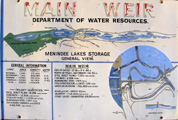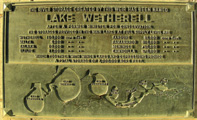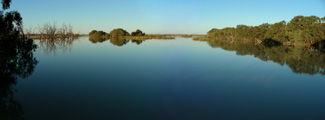
|
The Menindee Lakes and Darling River were a lifeline for
early explorers of one of the world's most arid regions.
Major Thomas Mitchell, Charles Sturt, and Bourke and Wills
all used the lakes on expeditions between 1835 and 1860.
Later, it was thought that the Darling River would be navigable
providing a suitable route to develop Australia's interior.
The township of Menindee became an important access point
to the outback.
However, the flows in the Darling River proved to be unreliable,
causing difficulties with navigation and water supply.
For example, the paddle steamer Jane Eliza took 3 years between
1883 and 1886 to complete a voyage between Morgan (on the
River Murray in SA) and Bourke, NSW.
The Lakes system is located on the Darling River, about
200 km upstream of the junction of the Darling River and
River Murray, which is at Wentworth in south-western NSW.
The nearest town to the Menindee Lakes system is Menindee
and the nearest city is Broken Hill. |

|
Use of the lakes as water storage was initially
proposed in 1894, when an act of parliament authorised a
private company to store water in Lake Menindee.
That proposal never eventuated.
There are four main lakes in the system: Lake Menindee,
Lake Cawndilla, Lake Pamamaroo, and Lake Wetherell.
The lakes, at maximum capacity hold three and a half times
more water than Sydney Harbour and covers an area some seven
and a half times greater.
The Lakes were originally a series of natural depressions
that filled during floods.
As the flow receded the floodwaters in the natural depressions
drained back into the Darling River.
It takes approximately 12 days for regulated flows to travel
from the Menindee Lakes to Wentworth. |


It wasn't until 1949 that the Menindee Water Conservation Act
empowered the State to commence the enormous undertaking to harness
the huge water resource that flows through the Darling River.
Works started in 1949, with major works being completed in 1960
and completion in 1968.
The total cost of the works to completion (December 1968) was $11,269,817.
The project employed approximately 200 people at a time.
Single men were housed in barracks with a large kitchen, mess hall
and amenities.
The town complex included stores, a carpenter's shop, welding bays
and steel bending works fabricating the regulator components and
hundreds of tonnes of reinforcing steel for the concrete structures.
On site contractors drove the huge fleet of scrapers, tractors,
graders and draglines moving over six and a half million cubic
metres of earth to form the levee walls.
Officially opened on 12 November 1960 the Scheme realised the dream
of an oasis in the Outback. |



